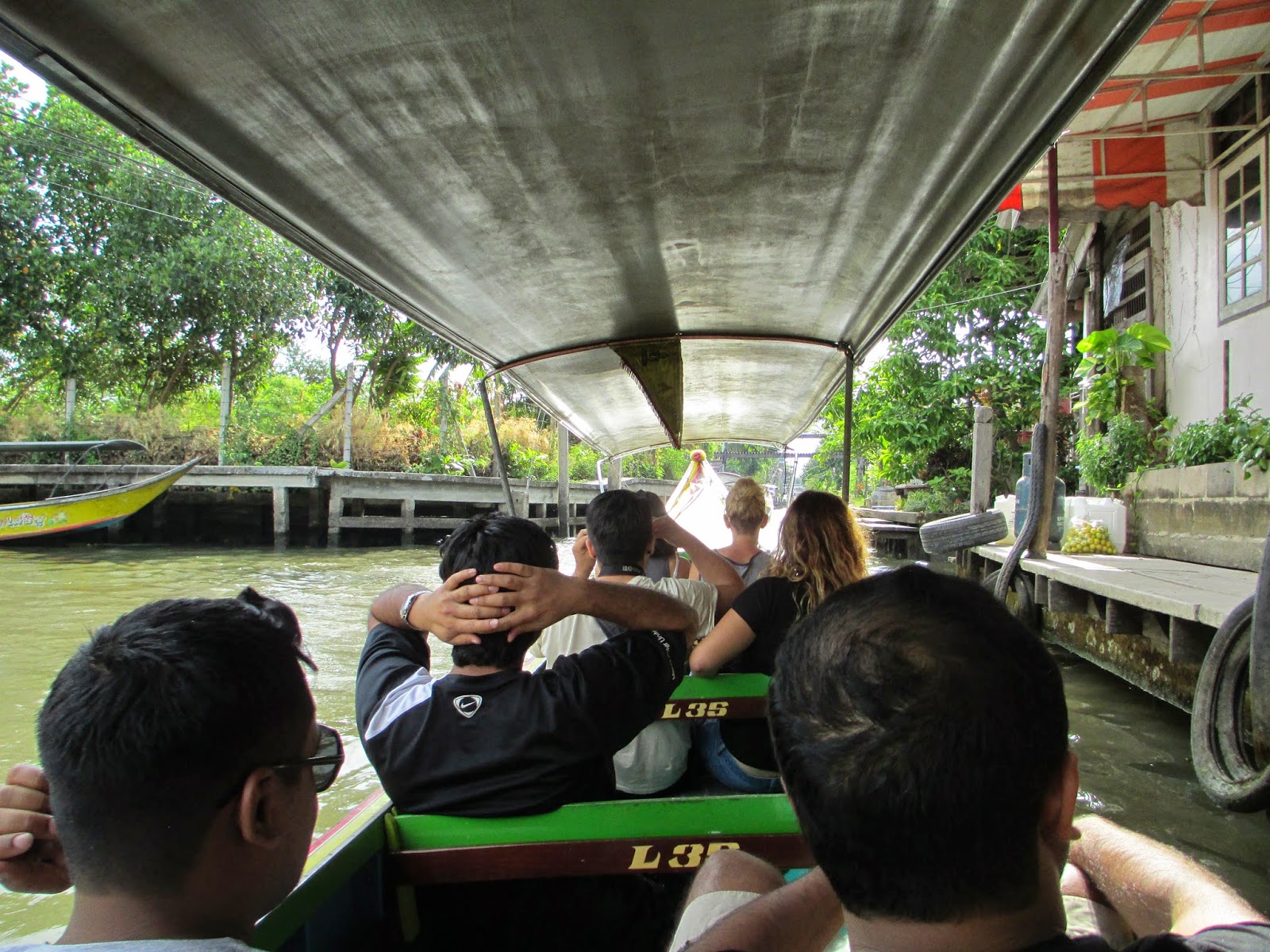I was forced to ride a bus from Butterworth to Johor Bahru in southern Malaysia, and thence to Singapore. Thanks to Hari Raya, the end of Ramadan, all the trains were booked up. It was
I woke up at 5:45 a.m. on the morning of Wednesday, July 30, slipped downstairs in the predawn darkness, gave my postcards and 10 ringgit to the night clerk and asked him to mail them for me, and caught the first ferry to the mainland at 7:00 sharp, crossing a calm strait under the pale light of dawn.
...bam, we were in Kuala Lumpur.
 |
| Not my photo. |
Then the agony began. We'd already been on the road five or six hours, but we happy few going to Johor Bahru would remain for a further 8.5 aboard that boiling, filthy bus with precious few rest stops, no food, and shock absorbers that amplified every bump in the road.
You can't imagine how glad I was to stumble off that accursed machine at Larkin Sentral Station in Johor Bahru, wobbly-legged, sweat-grimed, weak-stomached, bleary-eyed, and foul-tempered. For my trials were not yet over: I thereupon boarded another bus, the 170 for Queen Street in Singapore. I got on and off that bus three freaking times—once to exit Malaysia (and get my exit stamp from a callous-looking woman in a black hijab), once to enter Singapore at Woodlands (which necessitated waiting in line for 40 minutes, and I had to go back to the end of the line once because I forgot to fill out a damn entry card), and finally to go through customs inspection. Each time I stepped off the bus into the steamy night air, my glasses fogged up and my pores began oozing sweat. It crusted my hair, soaked my skin and clothes, and soured my mood. I hate sweating and I hate climates like what they've got down in Southeast Asia, irresponsibly warm and humid. Furry mammals—particularly clothed human beings—have no business living in places like that. It's better if we leave the whole cockamamie place to the reptiles.
At nearly eleven o'clock, 17 hours after waking up, 14.5 hours after leaving Butterworth, and three hours after arriving in Johor Bahru, the 170 bus dumped me out on Queen Street. I had to walk another five or six blocks (and ask a kindly cabbie for directions) but I made it to my hostel, the Tresor Tavern on Jalan Besar in Little India near Farrer Park. Before entering I tried to buy a much-needed 1.5-liter bottle of water with my debit card, but the Sri Lankan shopkeeper didn't have a card reader. That's when a random Singaporean, a tottering old fellow with a shock of gray hair, bulging eyes, and a broad mouth filled with crooked teeth lurched up to the counter to buy a pack of gum. He and a friend had been sitting and eating and boozing it up for who knew how long before I'd walked in. This elderly Samaritan grokked the situation in a blink. Without hesitation he bought the 1.5 liters of water for me, and handed me ten Singapore dollars on top of that. Then he lurched away without waiting for a thank-you. I honestly didn't know what to do, say, or think, and that combination's rare for me. You hear a lot about the kindness of strangers when you're out traveling the world, but the reality of it really hits you in the old heartstrings. That first drink was the coolest and sweetest gulp of water I've ever had.
My rehydrated corpse hit the rock-hard mattress of the Tresor Tavern's third-floor mixed dormitory at almost midnight. The room had twelve beds, bunked and curtained, the frames bare metal and the rings squeaky. The floor was concrete, the walls bare, the ceiling choked with exposed pipes—"Like a jail," said my elderly Indian roommate. Garbage was stacked atop every locker, none of which actually locked. The wireless Internet only worked on the ground floor, none of the upper floors. It seemed I would have to physically place an order for a towel. Two things did work, however: the air conditioner and the light switch.
Good night!






























































